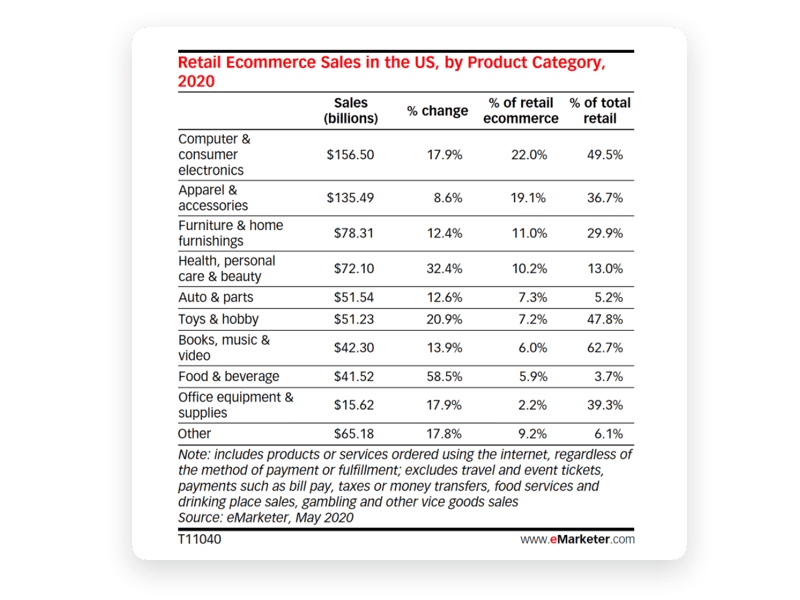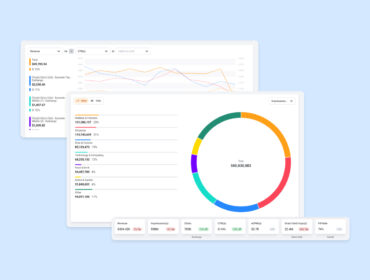Reading the holiday tea leaves: eCommerce and the pandemic’s role in the 2020 holiday season

2020 has raised a lot of questions for the world and AdTech alike. What cookie-blocking news will break next? Who will be president? Will we ever get to see live music again? Another burning, more immediate question racking our brain was what will Q4 and the holiday season look like this year? This got us reading the tea leaves, and as dance-pop legends Ace of Base once said, “I saw the sign.” The signs have been plentiful, the majority of which pointing to eCommerce being the midnight oil behind 2020’s holiday season.
Let’s look at the underlying forces at play as we try to chart a course for the most high-profile holiday season yet.
eCommerce in the Before Times
While a larger move was underway prior to 2020, there wasn’t much urgency around having a fully-powered eCommerce option. Some traditional and D2C brands had already built out their eCommerce channel but there were still entire categories in the early stages of growing their solutions. One notable example being grocery, who’s eCommerce revenue at the time was not contributing much to their bottom line.
Then the pandemic hit, forcing massive closures and bankruptcies. Many brands who relied on their brick-and-mortar presence for revenue were caught flat-footed (i.e. big box retailers), suffering devastating losses. Other brands with more mature eCommerce options (i.e. Walmart, Target, BestBuy) or who were digitally native to begin with (i.e. online D2C brands) were able to stem this tide and even benefit from the lockdown.
After the shock of March and April subsided, brands pivoted, putting their full weight behind their eCommerce solutions. The pandemic accelerated eCommerce technology and marketing efforts. Kunal Gupta, CEO of Polar was quoted in eMarketer, saying “The retail industry’s digital transformation has accelerated from a five-year timeline down to one year.” Even though sales overall are down (it’s projected that total retail sales will drop 10.5% in 2020), eCommerce is the lighthouse guiding brands through 2020’s storm-tossed seas.
Increased eCommerce sales and buoyed ad spend
Now those ships are coming into port. Between January and June of this year, $347B was spent online, up 30% from the $266B spent during the same period in 2019. eCommerce’s growth won’t be slowing down, as it’s slated for 18% growth overall in 2020, hitting $709B in sales which is up from $601B in 2019.
We’re sitting smack-dab in the middle of a paradigm shift, as all eCommerce categories measured by eMarketer will see double-digit growth this year (with the exception of Apparel & Accessories). Standouts are Food and Beverage and Health/Personal Care/Beauty expected to grow 58% and 32% year-over-year, respectively. eCommerce is also keeping the industry’s ad spend afloat for an increase of 3% growth and total of $28B despite monumental detractors. eCommerce is also helping to sustain Retail ad budgets, making Retail the largest spender on digital ads in 2020.

Brands have acclimatized quickly over the last six months, optimizing their approaches to their eCommerce. Now it’s time for their biggest challenge yet, scaling the proverbial summit of Q4 holiday sales.
This year is about survival for many brands. Retail already places an extreme emphasis on Q4 and the push to make ends meet this year is more real than ever. eCommerce is the lifeline and it’s time to double down on what’s proven successful so far.
Here’s how eCommerce and the pandemic are influencing the holiday season
New faces to the eCommerce game.
Quarantine orders have resulted in customers diving head-first into eCommerce just as much as brands with new age demographics getting their feet wet. For instance, baby boomers (age 56 to 74) are among those more fully embracing digital channels – 45% of boomers surveyed by the National Retail Federation (NRF) in the spring said they were shopping online more as a result of the pandemic. Now that boomers are getting comfortable with online shopping we can excerpt that habit to continue as the holidays ramp up. 82% of Millennials, familiar faces already at ease with online shopping, are planning on doing their holiday shopping digitally this year.
eCommerce will continue to absorb the displacement of in-store sales.
Even though new demographics are entering the eCommerce ecosystem, the holidays were already digitally driven prior to COVID. Google’s 2020 Retail Guide states that last year, 58% of holiday purchases happened online, compared to 42% in-store. We can reasonably expect those in-store numbers to decline and shift to eCommerce this season. Research from Deloitte offers a similar sentiment, projecting online holiday sales to increase 25%-35% in 2020 compared to a 13% increase in 2019.
eCommerce helps consumers maintain a social distance.
Although shoppers have become more accustomed to the ‘new normal’ they’re still taking the precautions needed to flatten the curve. We can see this reflected in the rapid rise of contactless delivery – methods like in-store and curbside pickup. Compared to 2019, buy online pickup in store (BOPIS) usage is up 259% year-over-year as per Adobe. eCommerce plays a huge role in this stratospheric growth, serving as the primary fulfillment system for these types of orders. With 79% of shoppers saying contactless store pickup is very important to them, we can expect consumers to rely on BOPIS this holiday season.
The holidays are starting earlier as we spend more time online.
It was always a best practice to start holiday campaigns early but now that consumers are spending more time online, over an hour more than last year, it’s important to stay ahead. Shoppers’ holiday endeavors will be beginning sooner and lasting longer amidst the pandemic. Google cites that 23% of shoppers look for gift ideas three to six months prior to the holidays and 54% of holiday shopping is unfinished after Black Friday/Cyber Monday week. On top of all this, Amazon recently announced that Prime Day will be held from October 13 – 14 this year, marking an unofficial kickoff to the holiday season.
Oddly (or expectedly for some), the pandemic, eCommerce, and the holidays have become deeply intertwined. We hope we’ve made some sense of that relationship with this post. Here’s to a merry and bright holiday season!
Check out these 3 ways to use email to support your eCommerce business.


